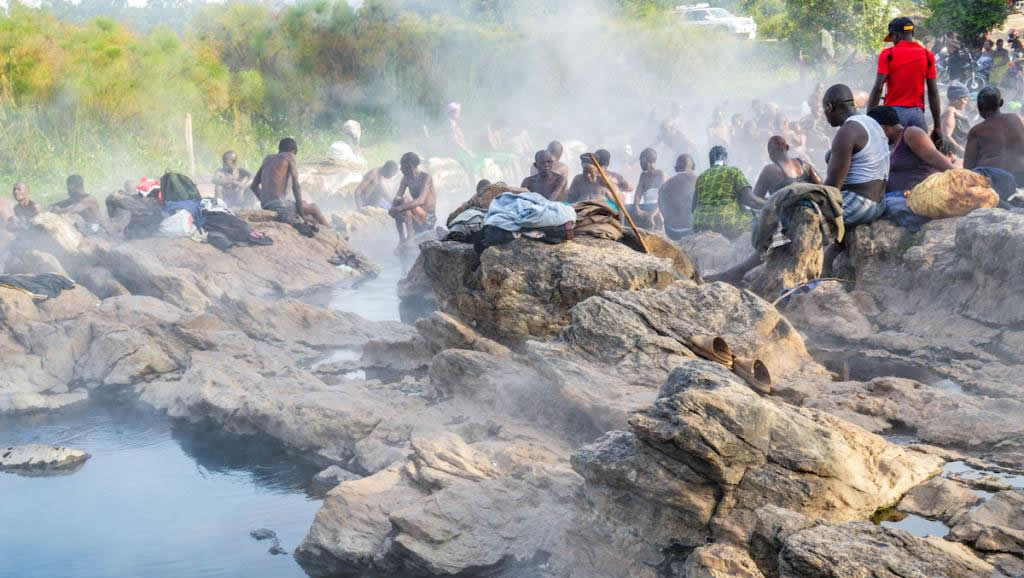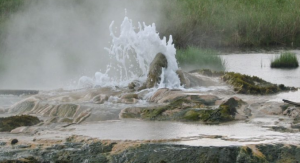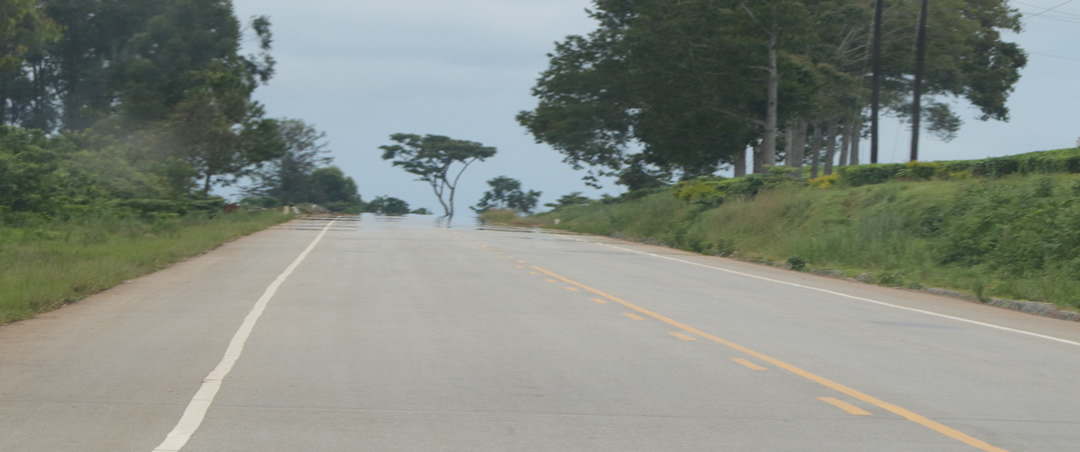
The healing hot springs an unforgettable tourism spot in Uganda
On your safari in Uganda, never miss visiting Kitagata Hot Springs; the most sought after in Uganda, and experienced this magnificent work of nature first-hand.
There are breathtaking views of panoramic hills and valleys and serene green vegetation as you approach Kitagata Hot Springs.
On reaching the site, especially in the evenings, one wonders whether it is a market, for there is an immense crowd of humanity congregated here.
But the half-naked people sitting on rocks as they enjoy the natural warm water are here to relish one of Uganda’s gifts of nature. This place attracts hundreds of people daily.
At Kitagata Hot Springs, women and children have their own zone, while men have a separate section to themselves. The hot springs are made up of two sections: one side has water hot enough to prepare porridge or an egg, while another side has warm water.
Many stories have been told about Kitagata Hot Springs, but the most popular belief is that it has healing powers. There are two hot springs adjacent to each other. According to the locals, one of the springs is known as Ekyomugabe, because it was used by the former king (Omugabe) of Ankole.
The spring with healing powers is named after Mulago Hospital. The hot springs also attract tourists in Uganda, drawing many to experience the natural phenomenon of a hot spring.
In physical sciences, there is an explanation for the hot springs in the volcanic system around this area. Beneath the surface in areas like Kitagata, there is heat from hot rocks or even magma way below the surface. When it comes into contact with any water above the ground, it heats it, leading to hot springs.
The water on the surface seeps through cracks in the earth and results in steam. Sometimes, the water is heated to boiling point.
Any proven healing properties from the water could be from the mineral components found in the rocks, or from the heat (for instance acting on swollen joints), or from the relaxation and other pyscho-therapeutic effects.

Kitagata Hot Springs in Uganda
Visitors to this place for different reasons. But most of them are here for the healing. Others are here for leisure and to have a glimpse of God’s wonders.
Men living in the neighborhood of this resource need not quarrel with their wives over issues of warm water for bathing, as most of them come to dip in the pools after work.
Those who do not want to bathe on the scene, come with jerry cans to take hot water back home. People gather at Kitagata Hot Springs from dawn to midnight, and even up to the morning, allowing the benefits of the mineral-rich waters to soothe them.
Urban dwellers may boast steam baths and saunas, but after relaxing in the waters of Kitagata Hot Springs, one would have a completely different story to tell.
Many people from all corners of the western region including tourists on Uganda safari adventure give testimonies of how they have been healed after dipping in Kitagata Hot Springs. Patience Kyogabeirwe, 45 years local resident, says the hot springs have cured her of many ailments since her childhood, especially wounds, skin rashes, and joint pains.
Tourist attraction
Kitagata Hot Springs have a lot of potential in terms of attracting tourists, as they have a strategic location. But little is being done to promote them.
Unlike Uganda’s national parks where entrance fees are set, at Kitagata Hot Springs, it is free entry and exit. Some tourists inquire about the cost of using the hot springs, or how much they should pay to tour the area, only to be told: “It is up to you.”
Nazario Bishanga, the overseer of the hot springs, explains that authorities once attempted to set entrance fees, but the area residents, especially those with health problems, opposed the move on grounds that they cannot charge people to access a natural gift from God. This has made it difficult to develop the hot springs so that they can tap money, especially from international tourists.
“It (Kitagata Hot Spring) would be generating a lot of revenue, both for the sub-county and households, and would expose the district to the outside world.” Bishanga says.
Students from secondary and primary schools, universities, and other institutions visit the place for study purposes. Also, since this is a gathering point, those interested in disseminating information target the evening hours to communicate their messages to a big number of people.
Currently, climate change worries the locals. They have noticed that when it rains, River Ngaromwenda, the river that supplies water to the springs, floods, and the springs become tepid.
Another interference in this pristine corner of nature has been the construction of Ishaka-Kitagata-Kagamba road, which locals claim tampered with the hot spring’s water system after the water system in Keitajonjo wetland was diverted during construction.
Locals urge the authorities to pay more attention to Kitagata Hot Springs, which needs to be preserved. For instance, given that some leave the site at night, electricity should be extended to the site to improve security.


